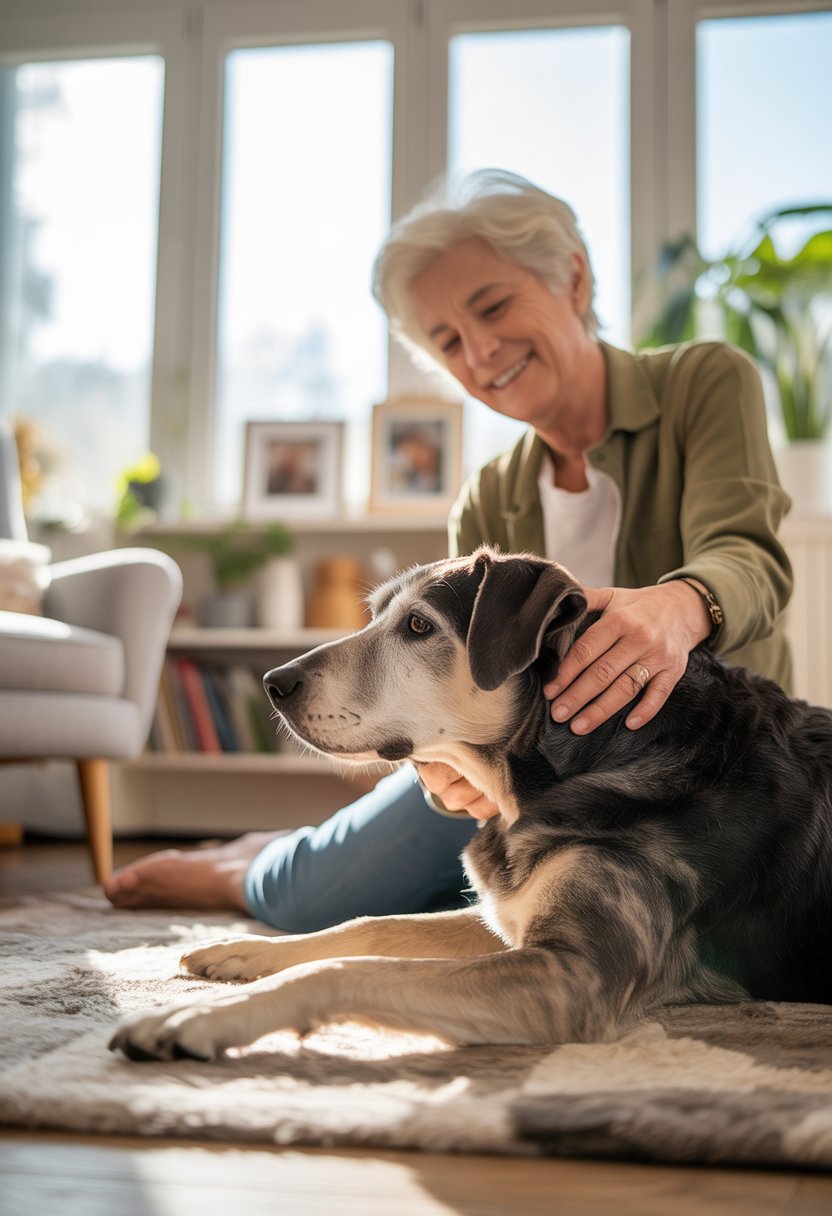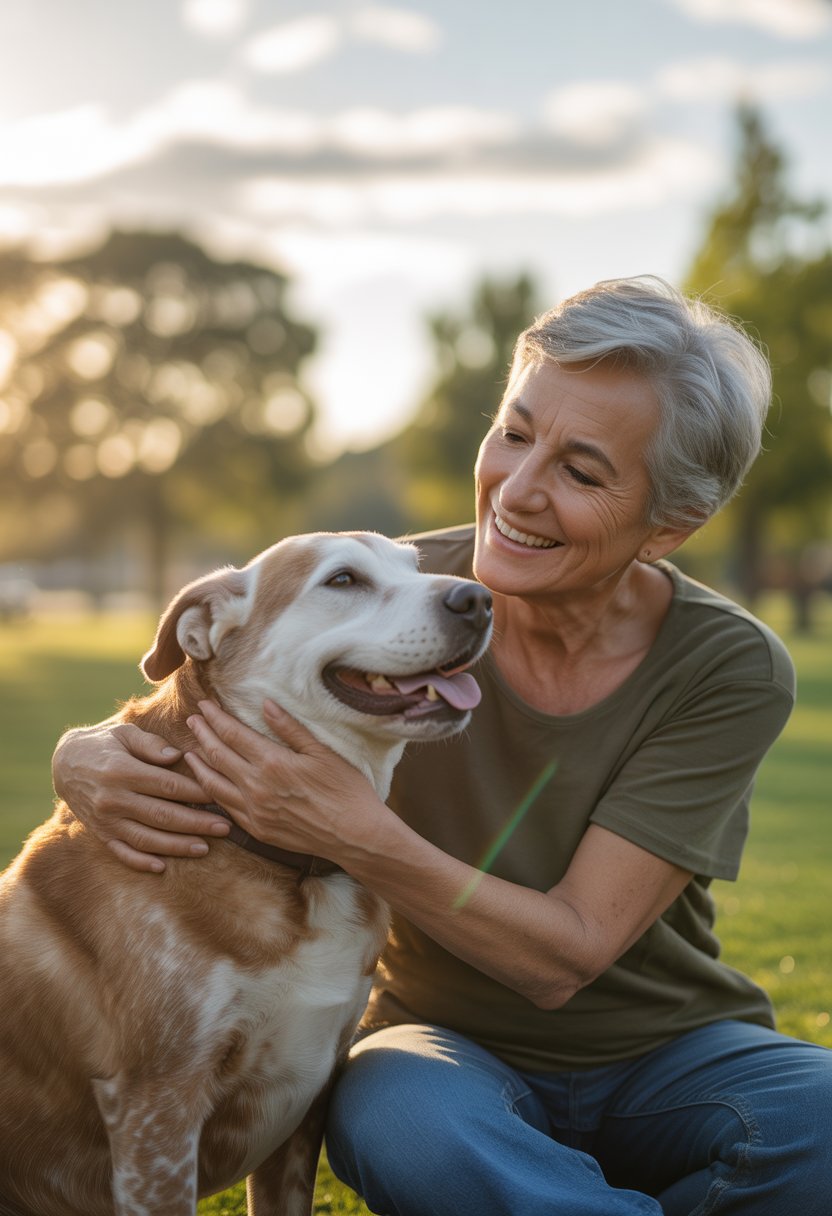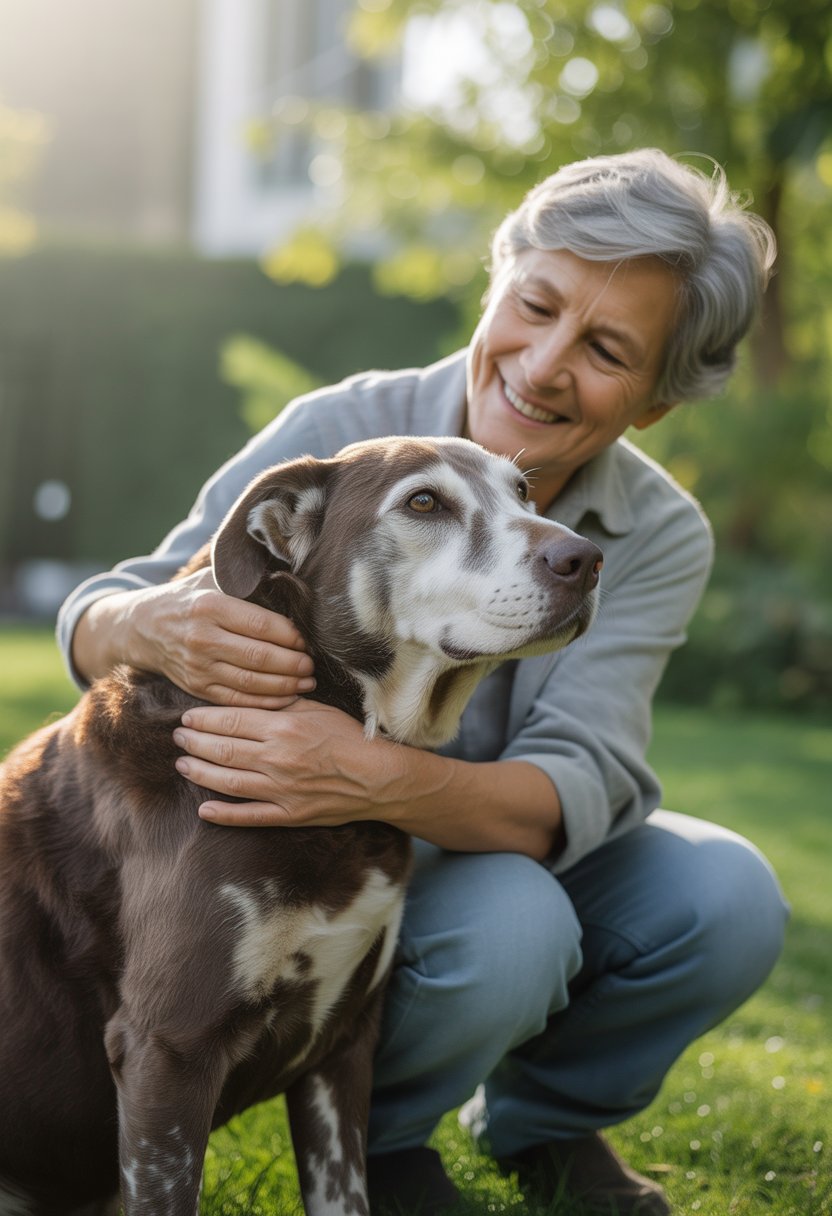Adopting a senior dog after I turned 60 changed my life in ways I didn’t expect. My older dog gave me purpose, companionship, and a new sense of daily routine that improved my overall happiness.

At first, I wasn’t sure if I could handle the extra care a senior dog needs. But the bond we formed showed me how much love and comfort an older pet can bring.
Living with my senior dog also made me more active and connected to others. These simple changes helped me enjoy life more, even after 60.
The Transformative Power of Senior Dog Companionship After 60

Having a senior dog by my side changed many parts of my daily life. Their steady presence gave me both emotional comfort and a reason to stay active. I also learned how to adjust my routines as my dog’s needs changed.
Emotional Support and Unconditional Love
My senior dog offers a unique kind of emotional support. They don’t judge or expect anything but love in return. This unconditional love helps me feel less alone, especially during tough or quiet days.
Their calm nature means I always have a peaceful companion. When I come home, my dog’s gentle greetings lift my spirits without overwhelming me. I find comfort in simply sitting beside them while reading or resting.
This deep connection has made coping with the challenges of aging easier. Knowing my dog depends on me creates a strong bond that keeps me emotionally grounded.
Physical Health Benefits and Exercise Motivation
Caring for my aging dog motivates me to stay physically active. Even if our walks are slow and short, moving daily helps both of us. It encourages better heart health and improves my mood.
Our walks are adapted to my dog’s pace, which means I avoid pushing myself too hard. This gentle exercise feels manageable and rewarding. Occasionally, I also do simple stretches or play light games, keeping us both engaged without strain.
Having a senior dog reminds me that regular movement is important. It turns exercise from a chore into a shared routine that benefits us both physically and mentally.
Adapting to Life Changes With an Aging Dog
As my dog ages, I’ve had to change how I care for them. I learned to watch for signs of pain or stiffness and adjust our activities accordingly. Comfort became a priority, from softer bedding to easier access to the outdoors.
I also schedule more frequent vet visits to catch health issues early. Feeding and grooming routines shifted to support my dog’s changing needs. This requires patience and attention, but it strengthens our relationship.
Through these adjustments, I’ve become more mindful of my own health too. Taking care of a senior dog has taught me how to manage life’s changes with flexibility and care.
Embracing Responsible Pet Ownership in Later Life

Taking care of a senior dog means paying attention to their specific needs. It requires patience and a careful approach, especially when managing health issues like allergies. This time with my older dog taught me how focused pet ownership changes with age.
Understanding the Unique Needs of Older Dogs
Older dogs are different from younger ones in many ways. They need softer food that is easier to digest and smaller portions to avoid weight gain. I learned my dog prefers shorter walks because her energy levels are lower now.
Comfort is key. A warm, quiet place to rest helps with joint pain or arthritis, which is common in older dogs. I also had to watch for signs of confusion or anxiety, which sometimes appear in senior pets. These changes mean their daily routine must be gentle and predictable.
Managing Health Concerns, Including Allergies
Health issues can be more common in older dogs. My dog developed some skin allergies, so I switched to hypoallergenic shampoo and changed her diet to avoid foods that caused reactions. I also visit the vet more often now to catch problems early.
Regular exercise helps but must be tailored to avoid strain. I check for any lumps, limping, or changes in appetite and behavior. Keeping vaccinations up to date is still important, even for an older dog. Allergies sometimes worsen with age, so prevention and quick action are critical.
Building a Stronger Bond Through Senior Dog Care
Caring for my senior dog has deepened our relationship. I spend more time just sitting with her or gently petting her to make her feel safe. These quiet moments matter a lot to both of us.
I also learned to read her subtle needs better, like when she wants to be left alone or needs extra comfort. This awareness made me a more responsible dog owner. Taking care of my older dog requires patience, but it has brought me real joy and meaning.